Downtime Prep
Anyone else feel like we’re living the movie version of Groundhog Day. Only, there’s really nothing comical about our reality right now. This is a surreal time, but there are opportunities to take advantage of the downtime.
So that we ‘don’t let the cure be worse than the problem,’ it’s time to prep your organization’s infrastructure. When the time comes (and it will) to put that proverbial, “We’re Open” sign in the window, you will want to be prepared. We’re all hopeful this tragedy will take the shape of a ‘V’ in economic recovery. Regardless, an organization needs to be fully operational immediately.
 There are several options / assessments that should be considered depending on the size of the organization:
There are several options / assessments that should be considered depending on the size of the organization:
- IT Infrastructure
- Data Management
- Recurring Data Center Advisory Service
- VMware
- Wireless (Wi-Fi) Site Survey
- Ransomware Recovery Preparedness
- Firewall
NO CONTACT: A LOT OF THESE SERVICES CAN BE DONE BY REMOTE LOGIN
In a normal world, many organizations don’t have the time or resources to tend to the above-mentioned assessments. It’s quite possible some organizations aren’t very familiar with their environment and take it for granted. It’s very possible an organization is about to face something catastrophic with their IT environment and not even know it.
THIS IS THE TIME
Therefore, an organization needs to be ready when that bell rings in the rematch fight against the economy. Not being prepared is like showing up to a gunfight with a knife. It’s going to be hard enough already but putting in the time now to prepare for the Nation’s comeback will provide dividends.
Our Engineers will do everything possible so that an organization can be a recipient of those forthcoming dividends. In fact, they will go the extra mile every single time. Just a few days ago, I was on a call with a client and our Engineers. They were troubleshooting several issues (REMOTELY) with the client’s Backup and their Exchange. Over three hours later and well past 6PM, they found the needle in the haystack.
After checking with the client, the next day, it was really awesome to see the following reply,
“Everything is great. Backups and exchange sync worked perfectly.”
These guys are good!
While I painted the picture of rainbows and butterflies, we do realize budget is a concern. If an organization does decide to conduct one or more of the listed assessments, there are costs involved. Believe it or not, the cost to conduct some of these assessments can be significantly lower than NOT doing an assessment which could result in a complete rebuild of the organization’s infrastructure.
In some cases, this service could be provided to the client at no cost to them. That’s the tease for this blog. We currently have four or five clients who are taking advantage of this opportunity. Now is the time to prepare for the future. Downtime equals prep-time. We’re one tough country and practice the belief of:
It’s not how hard we fall; it’s how quickly we get back up and fight the fight.
Until next time, stay safe and healthy. We’re all in this together and together is the only way we will win!
Downtime Prep
Anyone else feel like we’re living the movie version of Groundhog Day. Only, there’s really nothing comical about our reality right now. This is a surreal time, but there are opportunities to take advantage of the downtime.
So that we ‘don’t let the cure be worse than the problem,’ it’s time to prep your organization’s infrastructure. When the time comes (and it will) to put that proverbial, “We’re Open” sign in the window, you will want to be prepared. We’re all hopeful this tragedy will take the shape of a ‘V’ in economic recovery. Regardless, an organization needs to be fully operational immediately.
 There are several options / assessments that should be considered depending on the size of the organization:
There are several options / assessments that should be considered depending on the size of the organization:
- IT Infrastructure
- Data Management
- Recurring Data Center Advisory Service
- VMware
- Wireless (Wi-Fi) Site Survey
- Ransomware Recovery Preparedness
- Firewall
NO CONTACT: A LOT OF THESE SERVICES CAN BE DONE BY REMOTE LOGIN
In a normal world, many organizations don’t have the time or resources to tend to the above-mentioned assessments. It’s quite possible some organizations aren’t very familiar with their environment and take it for granted. It’s very possible an organization is about to face something catastrophic with their IT environment and not even know it.
THIS IS THE TIME
Therefore, an organization needs to be ready when that bell rings in the rematch fight against the economy. Not being prepared is like showing up to a gunfight with a knife. It’s going to be hard enough already but putting in the time now to prepare for the Nation’s comeback will provide dividends.
Our Engineers will do everything possible so that an organization can be a recipient of those forthcoming dividends. In fact, they will go the extra mile every single time. Just a few days ago, I was on a call with a client and our Engineers. They were troubleshooting several issues (REMOTELY) with the client’s Backup and their Exchange. Over three hours later and well past 6PM, they found the needle in the haystack.
After checking with the client, the next day, it was really awesome to see the following reply,
“Everything is great. Backups and exchange sync worked perfectly.”
These guys are good!
While I painted the picture of rainbows and butterflies, we do realize budget is a concern. If an organization does decide to conduct one or more of the listed assessments, there are costs involved. Believe it or not, the cost to conduct some of these assessments can be significantly lower than NOT doing an assessment which could result in a complete rebuild of the organization’s infrastructure.
In some cases, this service could be provided to the client at no cost to them. That’s the tease for this blog. We currently have four or five clients who are taking advantage of this opportunity. Now is the time to prepare for the future. Downtime equals prep-time. We’re one tough country and practice the belief of:
It’s not how hard we fall; it’s how quickly we get back up and fight the fight.
Until next time, stay safe and healthy. We’re all in this together and together is the only way we will win!
Working Remote
We live in a time (thankfully) where information is at our fingertips. Data can be transmitted and received from almost anywhere. And nearly all personal, and business-related, applications can be accessed remotely. As our world, our workloads, and our needed cache of data, rapidly expands; remote-accessibility has added a huge amount of flexibility.
But what if you had no other choice? The recent Coronavirus Pandemic has shown that this possibility can quickly become a reality. Let me take you on a quick little journey that should assuage any apprehension you may have about “working remote”.
The Past:
Business operates in a central office building or workspace. Employees travel to the office and operate there for the entirety of the workday. Remote work can be done for catch-up, and occasional work-from-home days are allowed. The majority of duties are conducted in the office.
The Present:
More and more companies operate a remote business model. Some businesses need to adapt a work-from-home option due to acts of nature or different unforeseen factors. While others have dissolved their office space entirely and now strictly have employees work in a remote fashion.
The Future:
Now here comes the tricky part. Where do we go from here? At the onset of the COVID-19 Pandemic, many places of business had to unexpectedly move their employees to remote functions without the means to do so. Being a technology company, Zunesis is still seeing this daily. It is an ongoing process but thankfully there are a lot of tools and services out there to help (more on that in a minute).
Some organizations may see the value and cost-reduction of moving day-to-day functions out of office buildings and into people’s homes.
What else is in store when the world begins to stabilize?
When are we all allowed to go “back to normal”?
Or is working from home “the new normal”?
The truth is…we don’t know.
 But either way, here’s a few things we DO know:
But either way, here’s a few things we DO know:
- Aruba Networks is working tirelessly to assist both corporate facilities and their newly delegated remote employees with deploying one unified network for company access.
a) With Aruba Central (Aruba’s Cloud-based management platform) a newly designed cloud gateway feature now allows organizations the ability to make their mission-critical applications remotely accessible to employees working from home or offsite locations. - Aruba has also put measures in place to help extend network coverage from data centers out to remote sites or emergency pop-up locations. This is done by using a wireless mesh solution and outdoor access points.
Zunesis has made the implementation and deployment of these solutions (and others) much easier for our customers. We are partnering with Aruba solutions architects and ensuring our in-house networking engineers are readily available.
For more information on Aruba’s strategy or Zunesis’ remote access solutions please visit the links below.
Zunesis Remote Access Solutions
In the meantime…live long and prosper, my friends. We are all in this together!
AI and Big Data Analytics: Undercover Weapons
Technology is an important element of all of our lives. It is taking center stage right now in the fight against coronavirus. AI and Big Data Analytics are leading the way in forecasting, diagnosing and more. Here are examples of technology in action.
AI to identify, track and forecast outbreaks
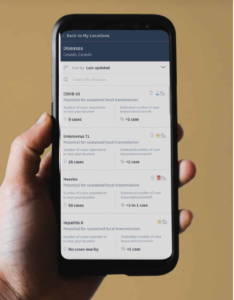 The World Health Organization notified the public of a flu-like outbreak in China on January 9. BlueDot, a Canadian health monitoring company, had already warned its clients of the outbreak on December 31. The company uses an AI (Artificial Intelligence)-driven algorithm that scraps foreign-language news reports, forums and blogs, and announcements from public health officials. This enables the company to give its customers an early warning of possible outbreaks of Coronavirus in areas like Wuhan. By analyzing global airline ticketing data, BlueDot correctly predicted that the virus would go from Wuhan to Bangkok, Seoul, Taipei, and Tokyo in the days following its initial outbreak by monitoring where the infected residents are headed next.
The World Health Organization notified the public of a flu-like outbreak in China on January 9. BlueDot, a Canadian health monitoring company, had already warned its clients of the outbreak on December 31. The company uses an AI (Artificial Intelligence)-driven algorithm that scraps foreign-language news reports, forums and blogs, and announcements from public health officials. This enables the company to give its customers an early warning of possible outbreaks of Coronavirus in areas like Wuhan. By analyzing global airline ticketing data, BlueDot correctly predicted that the virus would go from Wuhan to Bangkok, Seoul, Taipei, and Tokyo in the days following its initial outbreak by monitoring where the infected residents are headed next.
AI to help diagnose the virus
Artificial intelligence company Infervision launched a coronavirus AI solution that helps front-line healthcare workers detect and monitor the disease efficiently. Imaging departments in healthcare facilities are seeing increased workloads created by the virus. This solution improves CT diagnosis speed. Chinese e-commerce giant Alibaba also built an AI-powered diagnosis system they claim is 96% accurate at diagnosing the virus in seconds.
AI to process healthcare claims
It’s not only the clinical operations of healthcare systems that are being taxed but also the business and administrative divisions as they deal with the surge of patients. A blockchain platform offered by Ant Financial helps speed up claims processing and reduces the amount of face-to-face interaction between patients and hospital staff.
Drones to deliver medical supplies
One of the safest and fastest ways to get medical supplies where they need to go during a disease outbreak is with drone delivery. Terra Drone is using its unmanned aerial vehicles to transport medical samples and quarantine material with minimal risk between Xinchang County’s disease control centre and the People’s Hospital. Drones uses included patrolling public spaces, track non-compliance to quarantine mandates, and for thermal imaging.
Artificial intelligence is not going to stop the new Coronavirus or replace the role of expert epidemiologists. But speed matters during an outbreak. As the Coronavirus is circulating, there’s community spread. We want to spot those outbreaks quickly and intervene to keep them small. AI surveillance is becoming a useful tool in efforts to monitor and respond to the global outbreak.
Zunesis is here to help with technology needs for our healthcare providers, first response teams and more.
Important Advisory
On Monday, Microsoft released an advisory to inform users of a vulnerability affecting all supported versions of Windows, including Windows 10, Windows Server 2012, Windows Server 2016, and Windows Server 2019.
Microsoft is working on a fix for the vulnerabilities but did not provide a time frame on when the patch will be released. Or whether it will be available on patch-Tuesday or released as an out-of-band patch as it has for other zero-day exploits in the past. The next patch Tuesday is currently scheduled for April 14.
Microsoft simply stated the attacks are “limited” and “targeted” and to let the advisory server as a warning until a patch is released.
Microsoft has recommended the following workarounds until patch is released:
- Disabling the Preview Pane and Details Pane in Windows Explorer
- Disabling the WebClient service
- Renaming ATMFD.DLL
Additional Vulnerabilities with Windows 7 and Adobe Type Manager
Windows 7 is also affected by this vulnerability. A patch will be developed for Windows 7, however, unless a user subscribes to Windows 7 Extended Security Updates, they will not have access to the patch. See link at the bottom for more information on the Extended Security Update program.
The active attacks target a flaw in the Adobe Type Manager Library. Two remote code execution vulnerabilities exist in Windows when the Adobe Type Library Manager improperly handles a specially crafted multimaster font called Adobe Type 1 PostScript format.
The advisory states, “There are multiple ways an attacker could exploit the vulnerability, such as convincing a user to open a specially crafted document or viewing it in the Windows Preview pane.”
The advisory link from Microsoft can be found here:
https://portal.msrc.microsoft.com/en-us/security-guidance/advisory/adv200006#march-23-flaw
Information about how to get patches for products in the Extended Security Update program can be found here:
https://support.microsoft.com/en-us/help/4497181/lifecycle-faq-extended-security-updates
Please reach out to Zunesis if you have any questions regarding this advisory or need help with implementing the workarounds. We are here to help in any way that we can.
Zunesis Named to the 2020 Tech Elite 250 by CRN®
Tech Elite 250 List Honors the Highest-Achieving IT Solution Providers in Vendor Certifications
DENVER, CO, March 23, 2020
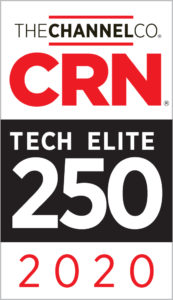 Zunesis, announced today that CRN®, a brand of The Channel Company, has named Zunesis to its 2020 Tech Elite 250 list. This annual list acknowledges the top tier of North American IT solution providers that have earned the highest number of advanced technical certifications from leading technology suppliers, scaled to their company size. These organizations have differentiated themselves as premier solution providers, earning multiple, top-level IT certifications, specializations, and partner program designations from the industry’s most prestigious technology providers.
Zunesis, announced today that CRN®, a brand of The Channel Company, has named Zunesis to its 2020 Tech Elite 250 list. This annual list acknowledges the top tier of North American IT solution providers that have earned the highest number of advanced technical certifications from leading technology suppliers, scaled to their company size. These organizations have differentiated themselves as premier solution providers, earning multiple, top-level IT certifications, specializations, and partner program designations from the industry’s most prestigious technology providers.
Each year, The Channel Company’s research group and CRN editors work together to identify the most customer-centric technical certifications in the North American IT channel. Solution providers that have earned these elite designations — enabling them to deliver exclusive products, services, and customer support — are then selected from a pool of online applicants.
Zunesis was founded in 2004 and for more than 15 years now, we have been focused on design, implementation, support and protection of our client’s IT Environments. Our team of IT Professionals average over 23 years of experience across all facets of the IT Infrastructure, including Compute, Storage, Backup/Recovery, Networking, Hyper-Visors, and Microsoft Server and Desktop. It is important that Zunesis stays on top of the latest technologies and implementations to service our customers.
“Solution providers that continue to pursue vendor certifications and extend their skill sets across various technologies and IT practices are proving their commitment to delivering the greatest business value to their customers through an incomparable level of service,” said Bob Skelley, CEO of The Channel Company. “Our CRN Tech Elite 250 list recognizes leading solution providers with expansive technical knowledge and esteemed certifications for exactly that reason.”
“We are proud of the impact that Zunesis has had in the Rocky Mountain region with servicing our clients’ needs. ” commented Zunesis CEO, Steve Shaffer. ” “Since the beginning, we have believed that the client’s needs trump everything else and that making the lives of our clients better is a high and worthy calling.”
The complete 2020 Tech Elite 250 list is available online at www.CRN.com/TechElite250 and the list will be featured in the February issue of CRN Magazine.
About Zunesis
Zunesis, headquartered in Englewood, Colorado has been an HPE Platinum Partner for 15+ years. Zunesis has expert engineers in HPE server, storage and networking technologies along with common software applications like VMware and Microsoft. Zunesis serves clients large and small but our sweet spot is the mid-market organization – the heartbeat of the US economy. Our mission is to make the lives of our clients and community better. www.zunesis.com
Follow Zunesis: Twitter, LinkedIn and Facebook
Zunesis Company Contact:
Rachael Stiedemann
Zunesis
rachael.stiedemann@zunesis.com
About The Channel Company
The Channel Company enables breakthrough IT channel performance with our dominant media, engaging events, expert consulting and education and innovative marketing services and platforms. As the channel catalyst, we connect and empower technology suppliers, solution providers and end users. Backed by more than 30 years of unequalled channel experience, we draw from our deep knowledge to envision innovative new solutions for ever-evolving challenges in the technology marketplace. www.thechannelcompany.com
Follow The Channel Company: Twitter, LinkedIn and Facebook
Copyright ©2019. CRN is a registered trademark of The Channel Company, LLC. All rights reserved.
The Channel Company Contact:
Jennifer Hogan
The Channel Company
A Defining Moment in History
Coronavirus, or as I like to refer to it, “CV”. It has swept the globe. The virus has panicked many. It has caused governments to shut down their countries. Economies to come to a grinding halt. It has tested infrastructure and caused an extensive run on our supermarkets and pharmacies. Our 24 hours news cycle has gone into over drive and has soaked up the ratings for it. Our politicians are using it to call out each other and blame each other for some of the issues. The sports world is on hold. Our schools systems have shut down. It is like living in a movie. We are living history. Our kids and grandkids will remember this. Our history classes will discuss it for generations (much like the flu epidemic of 1918). I will admit, it is a strange time and I have had problems dealing with it at moments.
I work from my home. Over the last 5+ years, I have worked remotely while I have worked with Zunesis. My wife is a wedding planner, who also works from our home. My family does not live in a large city. Instead, we prefer the quiet small town/country life. Basically we already, somewhat accidentally, have been self-quarantined for long before this crisis started.
I will also admit that for most of the time CV has been in the news, I have been somewhat flippant and derogatory towards it. The thought of hoarding of toilet paper and hand sanitizer was just a by product of watching too many zombie apocalypse movies. I guess when it comes down to it, I still think that.
A Change in Perspective
However, my overall opinion towards this crisis has changed pretty drastically in just the last few days. It started when our local schools closed. Then, my 8 year son (who became ill, thankfully with just a cold) had to get tested to ensure he was not infected. It continued when I saw that Las Vegas was actually closing casinos on the strip. It really hit home when I saw that bars, restaurants, gyms, and casinos are closed until further notice (with some restaurants still providing to-go orders).
Some would say, “Why didn’t it affect you when our sports leagues, major concerts, and some long standing events canceled?” It is a fair question. I was still looking at this as “a bunch of millionaires/billionaires just don’t want to get sued if their events cause an outbreak of the virus.” I thought that they were mainly looking out for their own self-interests, not the greater good.
When they decided to shut down so much of the hospitality industry, it was like a gut punch. I have worked in this industry and have many friends who still work in this industry. They tend to live their lives pay check to pay check. I know I did. What are they possibly going to do without pay? Which led me to think about other small business that are now going to suffer greatly (caterers, DJs, florists, and bakerys to name a few). Those who cannot afford to pay their employees an hourly wage, without the steady stream of business that is needed.
And to be honest, it got me thinking, what about me? What about my job? Will our customers still look to Zunesis for their IT needs? Will there be any IT needs? I know that the Federal and State governments are working on ways to help out all of the businesses and their employees that are affected by this. I also know that most companies are still working and doing business as completely as possible. Just by my current inbox, I can see that our customers are still looking to Zunesis. Much as they have done with us for the last 15 years. But, still, the thoughts lingered. The “what if” was still there. Scary thoughts to be sure.
In For the Good Fight
Today, (this blog was written on a Tuesday), after a restless night, where I did not get much sleep, I awoke with a new resolve. I don’t know what changed in me, but my spirit strengthened. Maybe it was my competitive nature that came roaring back. Maybe it was seeing that my children continue to laugh and play and are not weighted down by the “what ifs.” Whatever it was, I am thankful for it.
I have come to realize that I am not going to let this virus win. I am not going to give up, and give in to the doom and gloom. The news will not be on, as there is nothing there that is actually important. The CDC, WHO, and my local authorities will let me know what needs to happen. I no longer need to see/hear what “could” happen discussed.
If me giving up my freedoms, like travel, or vacation, parties, and date nights, will help get those men and women in the hospitality industry back to work quicker, then you will never see another person quarantine like me. I am still not going to hoard food and essentials (mainly because it takes away from other people who need it), but I am going to shop when there is the least amount of people in the store as possible. I will contact neighbors and friends before I go out and see if I can help them with pick and drop off on their porch. Basically, whatever it takes to beat this thing, I am going to do it.
That goes for my work as well. I am here and will continue to help as long as I have a internet connection and Zunesis is standing (virtually) right here with me. Our resolve as a nation, has always been what makes us great. Not our politics, policies, economy, or sports leagues. I obviously can’t speak for you, but I would instead implore you to do the same. This is not about adhering to the social distancing, or washing hands guidelines (please continue to do that), but instead this is about stepping up and winning this fight. I hope nothing but health and safety for you, your family, and your loved ones. Now let’s do what it takes to make this crisis nothing but a memory!
HPE Worldwide Ambassador Summit
Over the last several years, I have been lucky enough to be invited to attend the Hewlett-Packard Enterprise Worldwide Ambassador Summit. This is an invitation-only event where invitees learn about the strategy, products and programs HPE is currently working towards. We are asked to provide feedback on what is working, what is not working and how the programs are impacting the channel. There were several takeaways from the event which are summarized below.
Everything As a Service
Everything as a Service. All the executive sessions had the same overall message, HPE is the Edge-to-Cloud Platform-as-a-Service company. They are moving to an Everything as-a-Service model, from the Aruba Intelligent Edge to the HPE Hybrid Cloud. The target is to be open, cloud-native, intelligent, autonomous and secure at every level.
One of the key components to Everything as a Service is Greenlake. Greenlake is a program that brings the cloud experience on-premise. It is a true consumption model that provides Cloud like agility and economics, while keeping control on-premise. The customer achieves many cloud-like benefits. This includes rapid deployment, scalability, and consumption-based economics while maintaining control.
The catalog offers pre-designed, end-to-end solutions along with fully customizable options. Flex Capacity allows you to design and customize your own infrastructure solutions. One can select from a broad range of HPE and partner technologies and services.
Artificial Intelligence
Similar to most industry news, analytics and artificial intelligence (AI) was a major topic. HPE is incorporating AI into every technology, from the edge to compute to storage and networking. AI in the infrastructure is essential in the hybrid cloud world to simplify and reduce the complexity in managing infrastructure and ensure optimal performance and efficient resource use. HPE InfoSight is one of those AI solutions that predicts and prevents problems across the infrastructure stack. It ensures optimal performance and efficient resource use.
Clearpass Device Insight
With the introduction of cloud applications and software, plus the adoption of Internet of Things (IoT) devices, networks have become extremely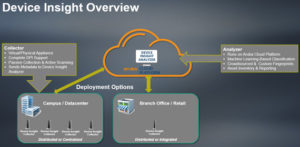 important to business and have become more complex. Aruba ClearPass Device Insight provides visibility across the network and provides the context of all connected devices. With Device Insight, attributes such as device type, vendor, hardware version and behavior and accessed resources are available. This allows the more granular information when creating access policies, reducing security risks and meeting key compliance requirements.
important to business and have become more complex. Aruba ClearPass Device Insight provides visibility across the network and provides the context of all connected devices. With Device Insight, attributes such as device type, vendor, hardware version and behavior and accessed resources are available. This allows the more granular information when creating access policies, reducing security risks and meeting key compliance requirements.
Composability
The last topic we spent a lot of time discussing was Composability. HPE introduced the concept with the introduction of the Synergy platform. They didn’t stop there. Today they also have the Composable Rack and Composable Fabric.
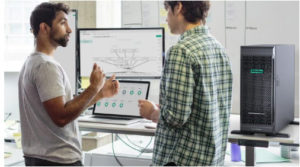 The Composable Rack can Automate IT operations and deliver applications and services faster. It uses standard HPE Rack mount servers, current management tools, along with the Composable Fabric. This solution enables rapid deployment of your choice of HPE SimpliVity, VMware virtual machines, Red Hat OpenShift containers, or bare metal workloads for new cloud-native workloads. HPE Composable Fabric provides flat, wire-once, and top-of-rack 25G server connectivity. It features programmatic control, easy rack-to-rack scaling, and broad compatibility with existing data center networks.
The Composable Rack can Automate IT operations and deliver applications and services faster. It uses standard HPE Rack mount servers, current management tools, along with the Composable Fabric. This solution enables rapid deployment of your choice of HPE SimpliVity, VMware virtual machines, Red Hat OpenShift containers, or bare metal workloads for new cloud-native workloads. HPE Composable Fabric provides flat, wire-once, and top-of-rack 25G server connectivity. It features programmatic control, easy rack-to-rack scaling, and broad compatibility with existing data center networks.
This fabric not only enables composable element connectivity but also directly affects the integrity and performance of the underlying infrastructure and applications. Traditional, enterprise networks focus on north/south workload traffic between clients and servers. They are not designed to handle the distributed and varied nature of modern scale-out applications that require machine-to-machine communication over the network.
Our solution architects at Zunesis are knowledgeable in all of these areas. Reach out to Zunesis today to find out more about these focus areas.
Microsoft OneDrive
Microsoft OneDrive has become one of the most useful tools in the Office 365 suite. It is being used by more companies every day. Between the robust feature set and the constant updates, it is easily on par with other cloud storage solutions. It is offered as part of every Office 365 plan. So for any Office 365 user, there is no reason not to use it.
Originally rolled out under the name SkyDrive in 2007, legal issues led Microsoft to settle for the name OneDrive instead. Just like many other MS products, two version of OneDrive are offered, a consumer edition and an enterprise edition. Both versions are very similar but have some key differences. The enterprise edition is much better for businesses. The most important difference is the ability to centrally manage the entire organization’s OneDrive.
Over the years since its release, Microsoft has been constantly adding new features.
So what do people like most about OneDrive?
Local Sync folder
When OneDrive is installed, it creates a OneDrive folder on your computer. This folder acts like a regular file folder. It looks just like any folder you would find in your favorites bar, like the documents or downloads folders. This folder also syncs all of its contents to OneDrive’s cloud storage. So not only is it easy to use, it is also accessible from any computer. You just need to log in.
With 1TB free with all Office 365 subscriptions (5GB free for regular users), most users will be able to fit most, if not all, of their files in the singular folder. OneDrive also supports multiple folders within the OneDrive directory. This allows you to keep everything organized the way you like it.
Files on demand
To keep local storage usage low, files are moved up into OneDrive until you use them. Files are not automatically kept on your local drive unless you specifically choose a file or folder to “always keep on this device”. You can still see and browse to all of your files. They download immediately when opened.
You can switch between keeping files on your local drive and keeping them in OneDrive just by right clicking the file or folder and choosing the correct option. No need to worry about needing files when you are offline, as long as you are prepared.
Sync existing folders
A recent addition to OneDrive is the ability to sync folders other than the OneDrive folder. The most useful folders being the my documents and pictures folders. This is an easy way to backup valuable pictures and documents that don’t necessarily fit into your organization of the OneDrive folder.
You can even sync these folders between computers. I use it to sync my desktop backgrounds across all computers. If I find an awesome picture that would make a great background, I just save it into my backgrounds folder. It syncs to OneDrive and automatically adds to my desktop background slideshow on both my work computer and personal computer.
Sharing files
In both editions of OneDrive, sharing files is as easy as right clicking a file and clicking sharing. There are multiple options when sharing. This includes a read-only version or an editable version, a password protected version, and a version that is only usable by a single person. You can set all sorts of permissions, especially in the enterprise version.
Access controls are immensely important in the business world when sharing sensitive information. Even better, these access controls can be controlled by an admin. This gives businesses more control over who sees your data and how.
Creating shared folders
One of the easiest ways to share files is to create a shared folder that multiple people can access. Whether you want to create a folder for a single team, a whole department, or even the whole company, the process is fairly easy. One creates the folder and adds the correct names to the list of users. All users will have access to the folder and all files within, with varying levels of permissions. You may want some users to only have read access, while others get write access.
Linked content
OneDrive gives you the ability to create a link to a file and send that to someone else to access it. This is particularly useful when trying to email files to someone else, especially someone outside of your organization. Not only is this convenient, it adds another layer of security to emailing files. It saves space in everyone mailbox by eliminating attaching large files.
OneDrive has come a long way in the last few years. Once it was overshadowed by other cloud storage services like Dropbox or Box. Now with its integration with Office 365 and robust security features, it is easily one of the leaders in the space. It is clear that this is a core application in the Microsoft Office suite. I think you will find its an extremely useful tool in the business world.
Looking to migrate to Office 365 and see the advantages of OneDrive? Contact Zunesis for more information.
We are all winners when there is competition in the semiconductor industry
My personal narrated history of the semiconductor market in my lifetime.
For many years, I have been labeled by my friends and peers in the industry as being an AMD fanboy. In truth, I am a fan of competition and a free market to drive innovation and keep prices affordable for everyone. In this blog, we will dive into a little history about AMD. They are very relevant today not only in the PC market but in the Datacenter as well.
Some history
When people think of computer processors, typically the brand Intel comes to mind. They have been pioneers in the consumer and enterprise microprocessor industry for more than half a century. The company was founded in 1968 in California by Gordon E. Moore a chemist and Robert Noyce who was a physicist.
Throughout much of the twentieth century advancements in computer processing could most notably be attributed to the Intel corporation. In the mid-1970s, something interesting happened in the microprocessor market. Another American company AMD or Advanced Micro Devices, known at the time to provide licensed second-source manufacturing for Intel and others started to develop and sell their own unique microprocessor designs.
This was the catalyst for consumers and OEMs to have a choice in the marketplace for whom provided their computer processors. Until that time, Intel had solely provided or licensed others to make the processors for the IBM personal computer and other enterprise products.
1980s-1990s – AMD can compete … mostly
Throughout the 80s and 90s, AMD was making licensed copies or clones of Intel processors with relative success. In 1996, AMD released its first in-house designed x86 processor. This competed with the Intel Pentium processors operating at 75-133Mhz. They weren’t developing anything revolutionary. They were providing a cheaper alternative to Intel and driving innovation to some degree.
This is the era in which I became an AMD customer. At the time, I could not afford an Pentium based PC. I cobbled together components that I could afford to build my first computer. It was an AMD K6 266Mhz processor and had 16Mb of RAM. It wasn’t much but I could do my schoolwork on it and it played a few games.
2000-2010 – Things are looking up for AMD
In the early 2000s, AMD released their socketed Athlon processors. They were true game changers as they supported features like on-die L2 cache and double data rate RAM. Later in 2003, they introduced to the market the first 64bit processor. Beating Intel to the punch and taking the innovation crown for a short period of time.
In 2007, AMD introduced their first server class processor called the Opteron. The Opteron was a very powerful and viable alternative to Intel’s XEON processor. Budget conscious businesses had another option when choosing servers for their data centers which wouldn’t break the bank. During this time frame, multi-core processors were introduced to the marketplace. AMD pursued this trend with positive results.
“At this time in my life, I was working in IT. I finally had some money to build the computers I wanted to build. Again, I chose AMD because of their price-to-performance ratio compared to Intel. My thought process involved simple mathematics. If I was able to achieve 90 percent of the performance of the Intel equivalent for 60 percent of the cost, then it seemed like a good choice. “ #lawofdiminishingreturns
2010-2015 – The Dark ages of which we do not speak
During this time frame, AMD is handedly beaten by Intel by most legitimate metrics. They did not innovate or develop new core architectures but chose to pile on the physical processing cores. A strategy that failed them for the better part of a decade.
The consumer products weren’t competitive. The server processors were relegated to budget options and entry level servers for small businesses. Although I owned many computers comprised of this architecture, it was a low point for me. I did lose some faith in the company. My concerns centered around the lack of competition in the marketplace. Monopolies are good for no one except Mr. Monopoly whoever that may be.
2016-Today – The enlightenment and salvation
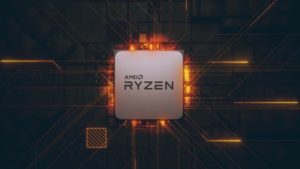 In 2016, AMD introduced the Ryzen or Zen microprocessor architecture to the world. This revolutionary microarchitecture displayed IPC (instruction per clock-cycle) gains of almost 52 percent compared to the previous Bulldozer architecture. AMD was back in the game in a big way.
In 2016, AMD introduced the Ryzen or Zen microprocessor architecture to the world. This revolutionary microarchitecture displayed IPC (instruction per clock-cycle) gains of almost 52 percent compared to the previous Bulldozer architecture. AMD was back in the game in a big way.
In the consumer market, AMD sells processors that were faster than Intel offerings and twice the price. In the enterprise, AMD has continued to increase core counts with this newest architecture. It has extinguished some of Intel’s market share in the Datacenter.
TODAY
AMD has released its second iteration of the Zen architecture called Zen 2. The enterprise offering is called 2nd Gen EPYC. This architecture is truly displacing the Intel offering because it can compete on more than one level. The IPC is on par and often exceeds the Intel equivalent. The core counts far exceed what Intel has by offering a 64 core/128 thread processor named EPYC 7742.
This processor by itself could facilitate a virtual environment for most small to mid-sized businesses. The processor is so revolutionary that virtualization/hypervisor companies are changing their licensing models in fear that a single socket host would undercut their profits from licensing.
Who offers it?
HPE, a company who has always been an advocate and an ally to AMD. They sell consumer devices outfitted with the newest AMD RYZEN processors based one ZEN 2 architecture. The servers utilize the newest 2nd Gen EPYC processors based on the same microarchitecture.
These solutions offer better performance. Pricing is competitive to the point where they displace any Intel offering. As an unabashed AMD fanboy, I urge you to look at the metrics and decide for yourself. In almost any computing workload, AMD is a competitive and cost effective option.
Contact Zunesis today for more information on AMD and other IT solutions for your organization.
Additional Resources:
Two AMD Processors Crush four Intel Xeons in tests
Intel insists Xeon vs Epyc benchmark fight was fari, amends speed test claims anyway
Epic Win: AMD’s 64-core 7nm Epyc CPUs Leave Xeon Lying in the Dirt




